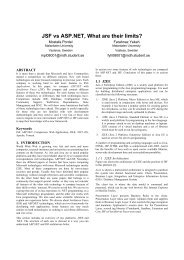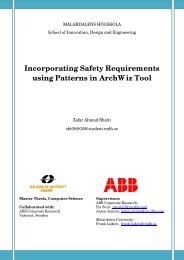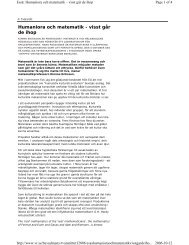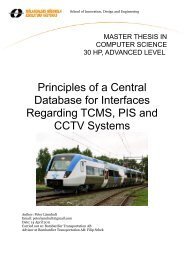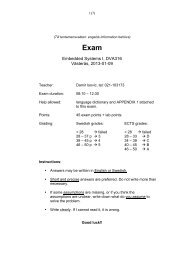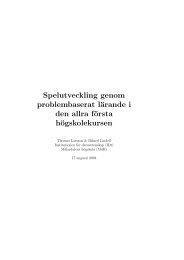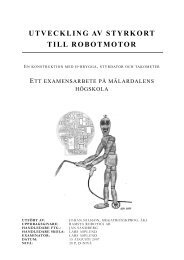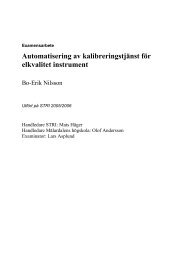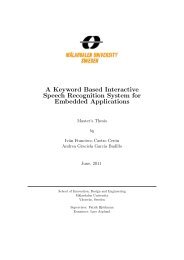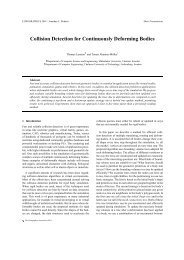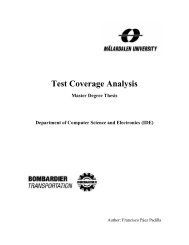UML PROFILE FOR SAVECCM - Research
UML PROFILE FOR SAVECCM - Research
UML PROFILE FOR SAVECCM - Research
You also want an ePaper? Increase the reach of your titles
YUMPU automatically turns print PDFs into web optimized ePapers that Google loves.
Save<strong>UML</strong> profile<br />
from a strict syntax of SaveCCM and universality of <strong>UML</strong> 2.0<br />
specification. Therefore a set of constraints must be created to refine<br />
<strong>UML</strong> 2.0 component model semantics to be suitable for designing<br />
SaveCCM modelling elements.<br />
• Translation of previously identified elements during which a suitable <strong>UML</strong><br />
element is found for every SaveCCM language elements and it is then<br />
further customized through the use of necessary stereotypes, properties<br />
and constraints.<br />
The result of this process is the profile specification (section 6.3) which<br />
describes the generated <strong>UML</strong> profile as a list of its stereotypes, basic <strong>UML</strong><br />
elements they extend and source SaveCCM elements they represent. This<br />
specification does not describe the translation process but only describes the final<br />
result, which is the profile specification. The profile specification is a general profile<br />
description and needs to be implemented in a design tool in order to be used for a<br />
concrete model design of SaveCCM models in <strong>UML</strong>.<br />
6.2.1 Specific design decisions<br />
During the process of creating Save<strong>UML</strong> profile, after a comprehensive analysis<br />
of both component models, several design decisions were made.<br />
6.2.1.1 Components<br />
Since the SaveCCM is intended for modelling of component – based systems,<br />
the basis for main architectural elements in SaveCCM is a component. SaveCCM<br />
introduces three main architectural elements; component, assembly and switch. In<br />
addition, three subtypes of SaveCCM component are defined; clock, delay and<br />
composite component. All together, this makes six different kinds of a component<br />
in context of CBD.<br />
<strong>UML</strong> 2.0 component model provides only one kind of a component. For needs<br />
of SaveCCM it is necessary to distinguish between six kinds of a component,<br />
therefore it is required to define six virtual metaclasses – stereotypes that will<br />
extend the <strong>UML</strong> Component metaclass. This will allow applying those stereotypes<br />
to components within the user model to distinguish between SaveCCM<br />
architectural elements.<br />
6.2.1.2 Subcomponents<br />
SaveCCM offers two elements that may have an internal structure defined,<br />
assembly and composite component.<br />
In <strong>UML</strong> 2.0 component model, there are two ways of specifying an internal<br />
structure of a component (section 4.5.1.1 and section 4.5.2.1):<br />
• Using metaclass Property.<br />
43



